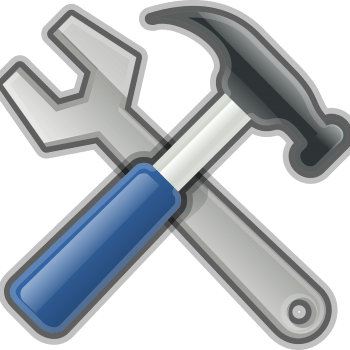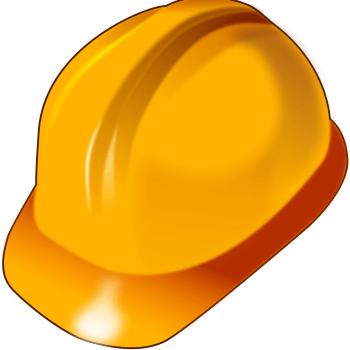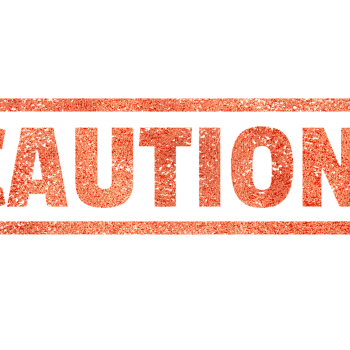Safety Tips for the Effective Use of Lifting Hoists Infographic
Hoists are heavy and valuable pieces of equipment which provide an invaluable role within the workplace for lifting operations. Using hoists safely for the benefit of staff and the longevity of the hoist is essential; in this latest infographic we provide some “safety tips for the effective use of lifting hoists”.
The infographic

Maintenance
Prevention is better than cure, and with that in mind, it is always better to be proactive rather than reactive. Effective preventative maintenance will save a lot of time, cost and heartache. Here are some essential hoist maintenance safety tips:
- Cleanliness – Ensure that your hoist is clean at all times. To do this properly, we would recommend checking your hoist before and after each use
- Free from defects – Ensure that the hoist is free from defects prior to each use. This should be done through regular equipment inspections, covered below
- Inspections – All hoists and other lifting equipment need to be inspected regularly:
- Everyday use – Quickly inspect the hoist before every use
- Periodically (weekly/monthly) – Fully inspect the hoist on a regular basis and repair any obvious defects. This requires a more thorough inspection, as some defects may be internal, such as with the internal strands of a wire rope
- Lubricated – It is essential to lubricate wire ropes and chains for continued smooth and safe operation by reducing friction

- Proper equipment maintenance – Ensure that all necessary maintenance is completed as soon as it is required:
- Ignorance is not bliss – Never ignore necessary equipment maintenance
- Never “on the cheap” – Do not ever carry out maintenance at a lower cost by knowingly using sub-standard parts and low-cost maintenance staff who may not be knowledgeable in maintaining your hoist in the correct way
- Servicing – In addition to regular equipment inspections, hoists need to be serviced at least every 12 months by a suitably trained and competent person, for all services as per the LOLER 1998 regulations:
- Record the examination date
- Write down the date when the next service is due
- Record any defects found (and ensure they are fixed)
- Label your equipment with the correct colour code, so as to easily show anyone when the equipment was last serviced, and when the next service date is due
Usage
The way that a hoist is used will have a major impact on how safe your operations are; here are a few tips to ensure you are conducting all lifting operations in the correct way:
- Attachments secured properly – Ensure that all attachments (hoists, hooks, slings, etc.) are secured properly
- Avoid quick and jerky movements – Hoist operations need to be smooth, and operators need to avoid quick and jerky movements. These can cause unpredictable swinging of loads, or could accidently cause loads to spill
- Clear of obstructions – Ensure that as the hoist lifts and particularly when moved laterally that the area is free of all obstructions
- Fixed and anchored – Ensure that the hoist is fixed and anchored with adequate arrangements in place to secure safe operations
- Lifting load limits – ALWAYS be aware of and comply with the load limits for the hoist you are using. Exceeding weight limits is amongst the most dangerous of ways to create risk when using a hoist, so NEVER exceed the manufacturer guidelines. All lifting equipment will be assigned two lifting limits; a working load limit (WLL) and a minimum breaking load (MBL). The former is the manufacturer’s guidelines that you must stick to at all times, as this is a number set way below the MBL, which is the point at which your hoist is extremely likely to break
- Load centring – Always ensure that loads are centred, as this avoids instability and issues related to lop-sided loads
- Load is secured – Ensure the load is secured, stop immediately if any of the load becomes insecure as this is a major safety risk
- Personnel safety – Hoists should never lift loads above the heads of staff. Additionally, all staff should be standing away from the hoist throughout the entire hoisting process
- Personal Protective Equipment – It is recommended that all staff are equipped with appropriate Personal Protective Equipment at all times during a lifting operation. Although staff should never be under a lifted load, as mentioned above, it is still best practice to have all staff in hard helmets during an operation. Also consider equipment such as protective eye glasses and rubber-grip gloves
- Select the best hoist for the job – There are many different types of hoists, and these all have different applications, uses and purposes. Using the best hoist will improve productivity and also safety, so it is recommended to seek the advice of experts where necessary to select the optimum hoist for your lifting operation
- Static loads – It is important that you only hoist static loads to prevent unpredictable movement, and hoists should not be used with loads which vibrate or move
- Unattended loads – Never leave loads suspended or in mid-air. Complete all operations prior to moving onto other types of work

Compliance with regulatory and legal guidelines
An important part of the safe use of lifting hoists is following the compliance guidelines available. These are there for your benefit and include legal and regulatory compliance:
- CE marked – Equipment should be clearly CE marked, and also complete with a Declaration of Conformity written in English.
- Legal compliance – Comply with:
- Lifting Operations and Lifting Equipment Regulations 1998 (LOLER) [1]. These are the most important guidelines when it comes to any lifting operation. Also refer to the
- HSE’s – Lifting Equipment at Work Guidelines [2]. These provide general information on the LOLER guidelines
- You’ll also find that most lifting equipment falls into the category of work equipment, and so is subject to the Provision and Use of Work Equipment Regulations 1998 (PUWER) [3]
- It is worth noting that both LOLER and PUWER are supported by an Approved Code of Practice (ACOP). ACOPs are not part of the law, but they all are made under the Health and Safety at Work Act (HSW Act) [4], which is itself a law
- Manufacturer’s guidelines – Always follow the guidelines of the hoist manufacturer. Don’t pay “lip service” to these guidelines, it’s important to understand and implement the guidelines for safe operations from those that have experience with and knowledge of the lifting equipment industry
- Warning labels – Follow all warning labels attached to the hoist and accessories. These may include weight lifting limits or last inspection dates, and will provide you with quick, yet crucial, information relating to your hoist and lifting operation

Environment
The surrounding environment is a vital factor in any lifting operation; here are some environmental tips for hoists:
- Clear debris/rubbish free area – The area around the hoist needs to be debris/rubbish free. This is for the safety of the operator and the hoist itself, as well as any loads that you plan on lifting
- Dry environment – It’s preferable to store/use your hoist in a dry environment as this will reduce the risk of rust. This is something which steel is susceptible to, the most common metal in the chains or wire rope used for a hoist’s lifting medium
- Chemical free environment – Steel is also susceptible to corrosion, so it is recommended to both store and use your hoist in an environment free from chemicals or substances
- Hoist danger signs – Install hoist danger signs that are visible in areas where hoists are in operation
- Pests – Ensure that the environment is pest free (e.g. rodents and other pests). This can introduce various risks (e.g. gnawing of cables) and can compromise safety
Hoist operative
Here are some tips relating to the hoist operative:
- Age – Only use adults, 18 years and older with experience of working with hoists
- Trained / qualified – Use staff that are trained and qualified in the use of lifting hoists and are also aware of the manufacturer’s guidelines and health & safety law
- Competent – Competency, which involves the above factors, is a requirement for lifting operations, as listed in the LOLER guidelines
Moving a hoist
Occasionally hoists will need to be moved around a worksite or even to other offsite premises. In these scenarios various health & safety tips apply, which are provided below:
- Complete operations – Before moving ensure that all operations are complete
- Disassemble from other equipment – If connected to other equipment (e.g. a crane), fully disassemble prior to moving
- Remove loads – Always ensure that any load is removed prior to moving the hoist
- Take care – Of the hoist and staff:
- Hoist – Although they look sturdy, hoists sometimes have delicate internal electrical components, so treat them with care when they are moved
- Staff – Hoists can be very heavy so think ahead and plan, this can help to prevent avoidable injuries to staff
- Turn off power – This will vary according to the power supply, for example:
- Air hoists – Turn off the air supply
- Electric hoists – Turn off the electricity supply

Contacting Lifting Hoists Direct
We hope that you have enjoyed this infographic from Lifting Hoists Direct, and that it has given you all necessary tips and information when it comes to safety tips for the effective use of lifting hoists. We can manage all safety aspects of hoists for you including inspections, servicing and maintenance and can also provide emergency breakdown support. For help and advice regarding lifting hoists, or should you have further questions that you haven’t seen covered in this infographic, please don’t hesitate to contact us today on 01384 75182.
Sources
- http://www.hse.gov.uk/work-equipment-machinery/loler.htm
- http://www.hse.gov.uk/pubns/indg290.pdf
- http://www.hse.gov.uk/work-equipment-machinery/puwer.htm
- http://www.legislation.gov.uk/ukpga/1974/37/contents
Image credit: succo, Clker-Free-Vector-Images, paulracko, OpenClipart-Vectors and Burak Kebapci

 Fast Delivery
Fast Delivery Low Prices
Low Prices Buy Online
Buy Online